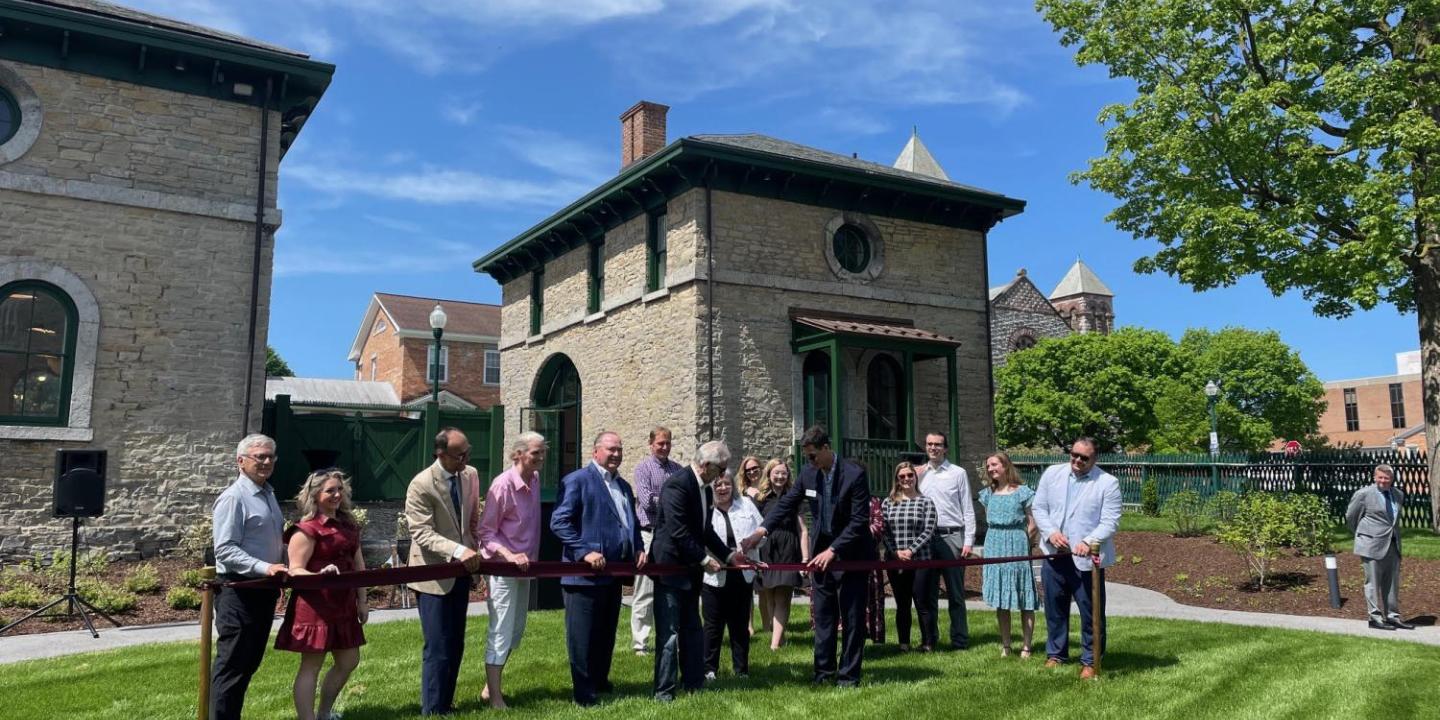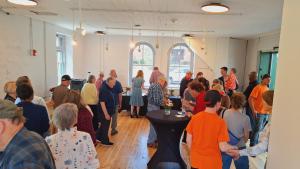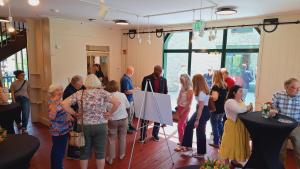
Project Description


The Seward House Museum's Barn and Carriage House Rehabilitation remidied almost a century of deferred maintenance with substantial preservation and rehabilitation. The project was funded through grants from the Environmental Protection Fund administered by the NYS Office of Park, Recreation, and Historic Preservation; Downtown Revitalization Initiative Headed by NYS Department of State and Administered by NYS Homes & Community Renewal; City of Auburn American Rescue Plan Act; and Save America's Treasures Grant administered by the National Park Service, Department of the Interior.
In the barn, the Seward House Museum now offers an accessible utilitarian space. With the restored 1860 windows and ceiling, efficient HVAC, presentation technology, and ample lighting and space, this space is the perfect blend of historic character and modern convenience. Lectures, meetings, events, and parties can be hosted comfotably in the building.
The carriage house has recieved substantial preservation as well, and will serve nicely as the permenant home of William Seward's 1860s Woodbrothers Carriage. In addition, the second floor of the carriage house is now used as office space for Seward House employees. With this development, more of the main house is being used to care for the incredible collection of the Musuem. Altogether, this project expands the offerings of the Seward House Museum as it strives to preserve and promote the Seward family legacy.
Project FAQs
Are the barn and carriage house open for public use?
For the 2025 season, the barn and carriage house will only be open to the public for Musuem special programs. More information about these events can be found on our events calendar. If you are interested in renting the buildings for your next meeting, party, or event, please refer to the Museum's rental page for more information, or reach out to the Director of Development at development@sewardhouse.org.
Where is the carriage?
William Seward's 1860s Woodbrother carriage is currently being conserved by expert conservationists at B.R. Howard & Associates in Carlisle, PA. The carriage is scheduled to return later in 2025. Follow the Seward House Museum on social media for updates on this initiative.
Can I walk around the buildings and use the new pathways?
Yes! While you are visiting the Seward House Museum, please feel free to explore the rehabilitated site.
Where can I park?
The parking lot at the Museum offers ten spaces. All spaces are accessible, and the lot connects to new ADA-compliant pathways that guide you around the site. Overflow parking is availible in the Lincoln Street Parking garage. More info can be found on the Directions & Parking page.

